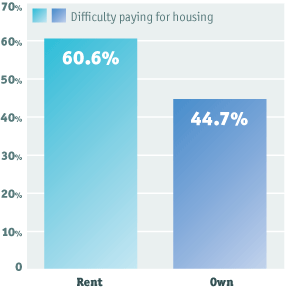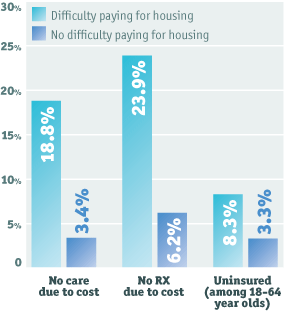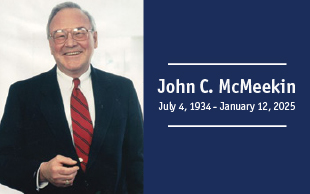Difficulty Paying for Housing in Southeastern Pennsylvania

The Housing Burden in Our Region
For most people, housing represents a significant portion of monthly expenses. Whether paying rent or mortgage, nearly half (48.5%) of adults in Southeastern Pennsylvania (SEPA) report that making their monthly housing payments, including utilities, is either very difficult or somewhat difficult. Much of the media attention around housing has focused on homeowners, yet the data show that renters in our region are struggling as well. More than half of renters (60.6%) in SEPA face difficulty paying their monthly rent and utilities, in addition to 44.7% of homeowners.
Those with lower incomes face the greatest challenge, with nearly three in four SEPA adults (74.5%) who live below the Federal Poverty Line struggling to pay. Yet nearly half (45.4%) of those with household incomes above the Federal Poverty Line indicated that their monthly housing obligations were somewhat or very difficult to meet. Many families in our region are having difficulty; more than half of households in SEPA with children under age 18 (55.2%) have trouble paying monthly housing bills.
Racial and ethnic disparities in difficulty paying for housing are evident throughout the five-county region. Nearly two-thirds (65.2%) of Hispanic and Latino adults in SEPA are having a hard time making housing payments, as are 58.2% of black adults and 44.3% of white adults.
Economic Barriers to Health Care in Southeastern Pennsylvania

Housing Costs and Health Care
Area residents who face challenges making housing payments may also forego or delay health care for economic reasons. SEPA adults who indicated their housing payments were very difficult or difficult to make each month were more likely than other area residents to report going without medical care when sick due to the cost (18.8% and 3.4%, respectively). Nearly a quarter of those having difficulty with housing payments (23.9%) did not get needed prescriptions because of the cost, compared with 6.2% of those not facing housing difficulties.
Among homeowners ages 18–64 in our region, nearly 64,400 are struggling to make their mortgage and utility payments and are also without health insurance. For these individuals, a medical emergency could result in long-term financial effects.
Summary
Nearly half of adults in our region experience a hard time making housing payments each month. This difficulty spans our region geographically, across the city and the suburban counties, and hits households with children and single adults, owners and renters, and those with both lower and higher incomes. Individuals and families who struggle to make housing payments may face other difficulties that impact their health, including delayed health care.
For more information about housing and health in Southeastern Pennsylvania, or about the Community Health Data Base please contact Rose Malinowski Weingartner at This email address is being protected from spambots. You need JavaScript enabled to view it. or 215.985.2572.





